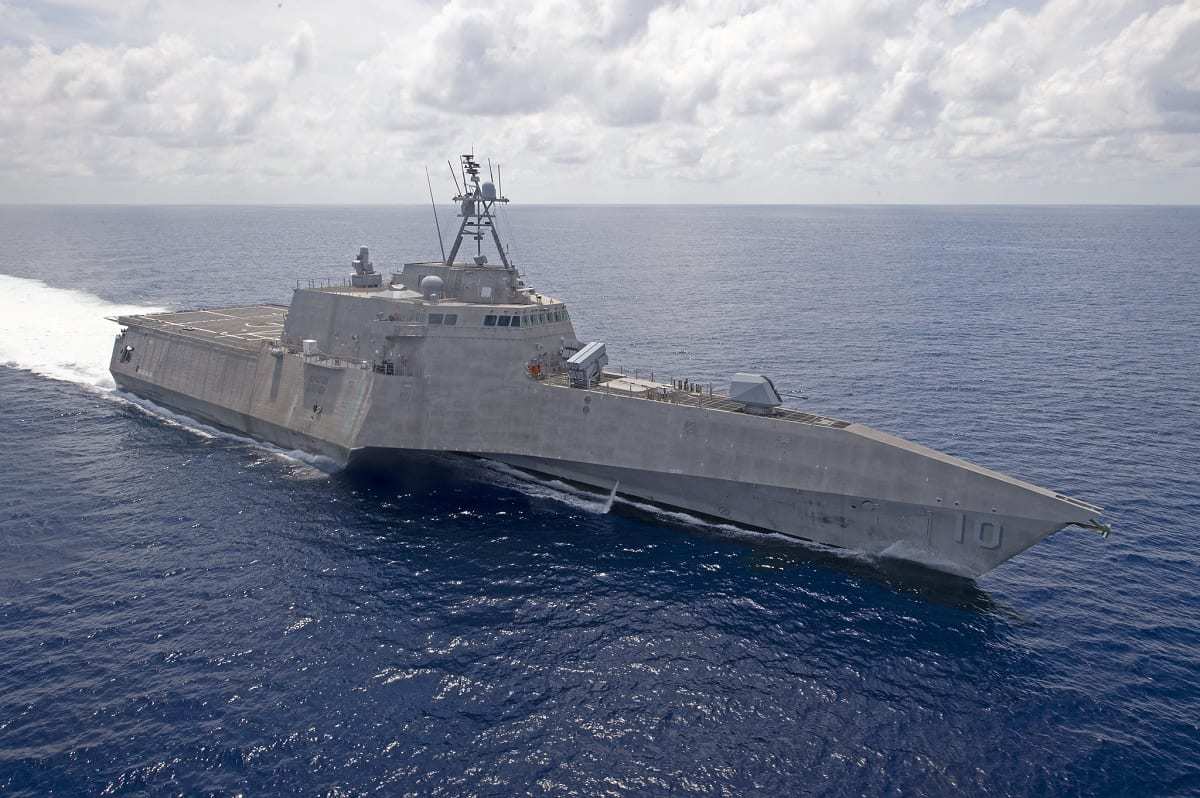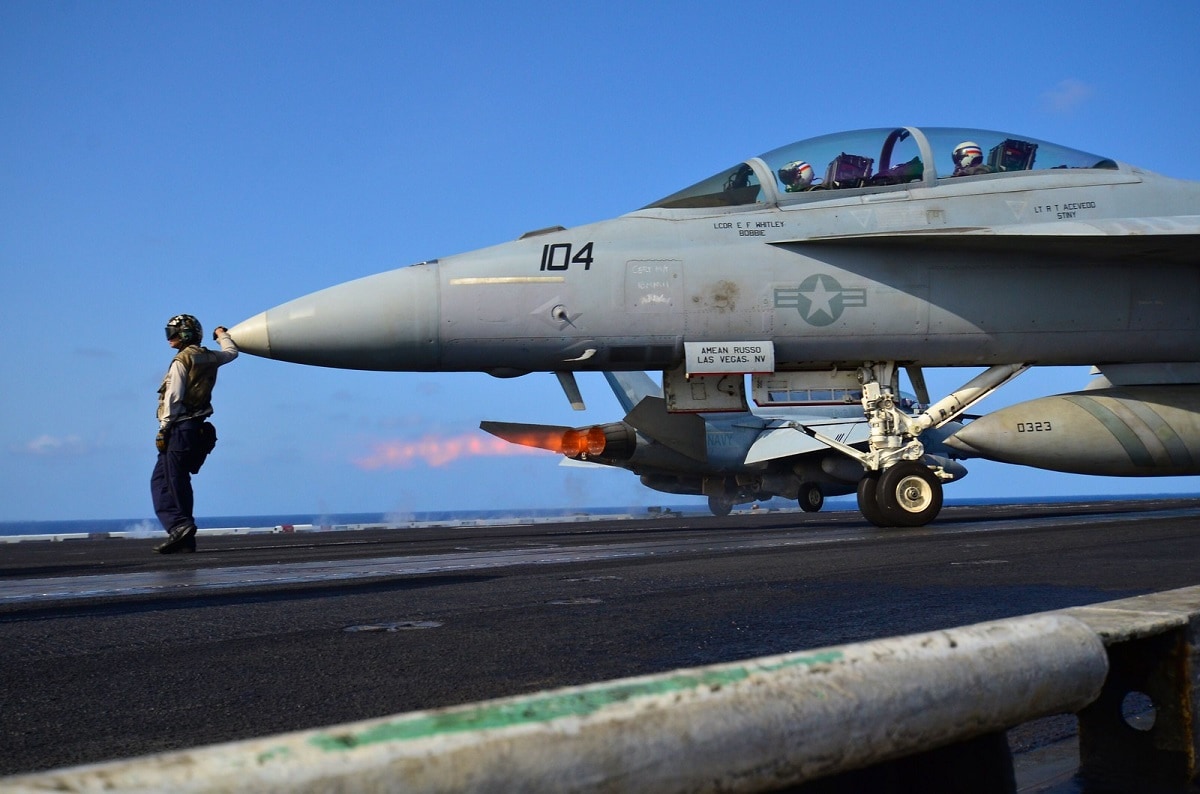We all know that the chances of a U.S.-Sino war in Asia are remote— thank God. With hundreds of billions of dollars in bilateral trade, the strong possibility that such a conflict would draw in most of Asia’s big geopolitical players, as well as the very real eventuality that such a conflict could go global (and nuclear), is enough to shut down such apocalyptic thoughts. However, as I have discussed in the past, there is enough pressure points between the two superpowers that sudden tensions could spark a crisis— a crisis that could spiral out of control if cooler heads don’t prevail.
The purpose of this article is straightforward and scary enough: what if Beijing found itself in a situation where it felt war was inevitable with Washington (a crisis over Taiwan, a crisis in the East or South China Seas etc.)— how would it procede?
While there are many different ways China could strike America— many of which would be non-kinetic and could even deny like a cyberstrike from a third-party country or actor— Beijing has the means to do incredible damage to U.S. interests and alliance networks throughout Asia and even in the wider Indo-Pacific.
Setting the Scene for War:
Before one can set the course for war, we need to get some housekeeping items out of the way. Let us assume for the purposes of this article China has decided to strike kinetically and decisively. Let us also assume Beijing’s goal is to limit the ability of U.S. forces along with their allies the capability to strike back conventionally. China in this scenario has also decided it will not use nuclear weapons and limit its war aims to the Asia-Pacific theatre. So, knowing all that, how would China go to war against America?
Here is what I would do if I was a China:
Step #1: Blind America
As someone put it best in a movie from my childhood, “If a man can’t see, he can’t fight.” The same can be said of a modern nation state fielding state of the art weapons of war— Beijing could simply try to blind America before it knows it is under attack. This is a simple enough concept and one most scholars assume China would utilize in a conflict. America loves its command and control (C2) systems combined with state of the art C4ISR to destroy its enemies. Think the 1991 Gulf War and every other conflict America has fought since then. Modern C2 and C4ISR systems control the ability of U.S. war fighters to wage conflict with all military services fighting evermore jointly. This allows the sharing of information concerning enemy positions and capabilities in real time across the services and with allies, dropping “smart bombs” on target, and many other capabilities that give Washington what might just be its ultimate advantage.
What if Beijing simply degraded and destroyed the ability of U.S. forces to have those advanced eyes and ears and brought back an old foe of U.S. forces— the much hated “fog of war?” If that was the goal, a Chinese military campaign might just begin in cyberspace. Beijing might launch massive cyber strikes against U.S. command and control centers around the world— trying to blind America and disrupt the ability of U.S. warfighters from seeing the coming battlefield in real time. Such strikes, at least if I was in charge in Beijing, would come from third party countries (or at least look like it thanks to proxy servers). America would know its systems were under attack, but it might not be clear from who— at least not right away. China would have the advantage, at least for now.
The next blow would come before America could ascertain who was striking at the heart of its best military capabilities— and this one would have China’s fingerprints all over them. Beijing would begin to attack American satellites in orbit, attempting to destroy Washington’s massive intelligence gathering machine and communications systems. At this point, war has definitely started and there is no mistake who is behind it.
Saturation Strikes: Think Chinese “Shock and Awe” With Lots of Missiles
First China blinds its enemy, then it drops the hammer. A large body of recent Western literature assumes China would leverage the large amounts of cruise and ballistic weapons it has developed and deployed over the last several decades in any conflict with America and its allies. This includes mostly accurate short, medium, and long-range weapons and the much-ballyhooed anti-ship ballistic missile or “carrier-killer.”

USS Gabrielle Giffords (LCS 10) patrols the South China Sea.
After Beijing is assured Washington and its allies are in C2 and C4ISR hell, the Chinese version of “shock and awe” would be on full display. Beijing— at least if I was at the helm— would launch a massive barrage of cruise and ballistic missiles from the land, air, and sea. The likely targets: U.S. and possibly allied airbases with many of their advanced aircraft on the tarmac like sitting ducks, physical command and control centers, and U.S. naval vessels around the Pacific. China would attempt to do as much damage in one massive blow, and hope that it was strong enough to would induce either a meager U.S. and allied response or possibly none at all.
Could America and its Allies Take the Heat?
Broadly speaking, the above scenario (which has been greatly simplified for reasons of time and space) is one that U.S. and allied planners have been thinking about since at least the mid 2000s. While things like the operational concept formerly known as Air-Sea Battle and efforts to disperse forces throughout the Pacific attempt to negate these possibilities, how would U.S. forces fair under the fire in the above?
What About Missile Defense?
For years I worshipped at the altar of missile defense, and I still do in many situations (think a North Korean or Iranian single or small missile strike against the U.S. or an ally), however, this is not one of them. And while I do feel missile defense has role to play in the above scenario, it would only slow Chinese saturation strikes— not stop them.
The challenge here is as simple as math itself. If China launched a massive missile strike against allied forces across the Pacific, there would simply not be enough interceptors, even assuming a 100% hit-to-kill ratio, to make a dent in the problem. You say make more interceptors? These are extremely expensive and China could simply make even more missiles to counter them, exacerbating the problem.
Consider the below when we apply the Chinese missile threat to just naval assets and get a little creative: if Beijing was really slick it could fire off older missiles that were not as accurate towards allied naval vessels— almost like decoys— just to shrink the number of available interceptors:
“Think about it — could we someday see a scenario where American forces at sea with a fixed amount of defensive countermeasures facing an enemy with large numbers of cruise and ballistic weapons that have the potential to simply overwhelm them? Could a potential adversary fire off older weapons that are not as accurate, causing a defensive response that exhausts all available missile interceptors so more advanced weapons with better accuracy can deliver the crushing blow?
What About Base Hardening?
Another great (and expensive) idea with its own unique set of challenges.
Could U.S. and Allied bases be turned into massive bunkers that have the capability to absorb a Chinese missile barrage and attacks by other means and fire back? Is it practical?
In an interview with John Stillion, a Senior Fellow at CSBA, I asked “How expensive is it to effectively harden a base?” Sources have told me in the past that if the U.S. Department of Defense properly hardened just one large base in the Pacific it would cost “billions and billions of dollars.” Stillion replied that:
“It depends on how effective and extensive you want the hardening to be. In general, bases within range of enemy fighter-bombers’ attacks would likely be subject to barrage attacks using ballistic missiles armed with submunitions. These would destroy any unsheltered aircraft and spread millions of sharp metal fragments across the runways and taxiways. This would also prevent any aircraft inside shelters from leaving until a path was cleared through the debris (known as FOD—Foreign Object Damage). This could be a time-consuming and laborious process. In the meantime, the enemy might conduct follow-on attacks using cruise missiles and manned aircraft with precision-guided weapons to target fuel storage, runways and aircraft in their shelters, rendering the base unusable until extensive repairs were undertaken.”
Parting Thoughts:
Due to limitations of time and space, this is just one of many possible scenarios when it comes to Chinese calculations of war and peace and what types of strikes Chinese planners would consider if they decided to make the ultimate choice.
While the above description does sound bleak, there is cause for optimism for the U.S. First, one must consider that America is a global superpower with powerful forces spread out all over the planet and not just in Asia. Simply put, the U.S. could quickly begin to amass large amounts of forces around the world after China has used large amounts of ballistic and cruise missiles and begin the counterattack. And keep this mind: if China struck first don’t discount global public opinion and allied contributions to aid America’s counter blow.

PACIFIC OCEAN (March 18, 2011) An F/A-18F Super Hornet assigned to the Bounty Hunters of Strike Fighter Squadron (VFA) 2 prepares to move as another jet launches from the aircraft carrier USS Abraham Lincoln (CVN 72) during a fly off of Carrier Air Wing (CVW) 2. Abraham Lincoln is returning home from a routine deployment to the Arabian Sea and is in the U.S. 3rd Fleet area of responsibility in support of maritime security operations and theater security cooperation efforts in the region. (U.S. Navy photo by Capt. Jaime Quejada/Released).
Also, as Stillion explained, there are a few ways to blunt such Chinese tactics, but with a caveat:
“The key to operating effectively in the face of a credible precision-strike threat is to find a combination of hardening, dispersal, rapid repair capability, active defenses (like Patriot and THAAD) and distance from the threat that allows sustained, efficient operation of the “sortie factory.” Range is key, because the closer one is to the threat, the greater the weight of fire the adversary can deliver and the harder and more heavily defended the base must be. At some point, if an adversary is capable and competent enough, and the base is close enough, it may not be possible to operate efficiently no matter how hard and heavily defended the base may be.”
No one— including myself— wants to ever see a great power war between the United States and China. The ramifications are too horrific to imagine. Yet, the possibility is there for all of us to see. Walking through an exercise like the above— thinking through what such a calamity would be like — makes the risks all too clear. All the more reason for the Washington and Beijing to find any all mechanisms to lessen the pressure points between them.
Harry J. Kazianis is Senior Director at the Center for the National Interest. This first appeared several years ago in The National Interest.

